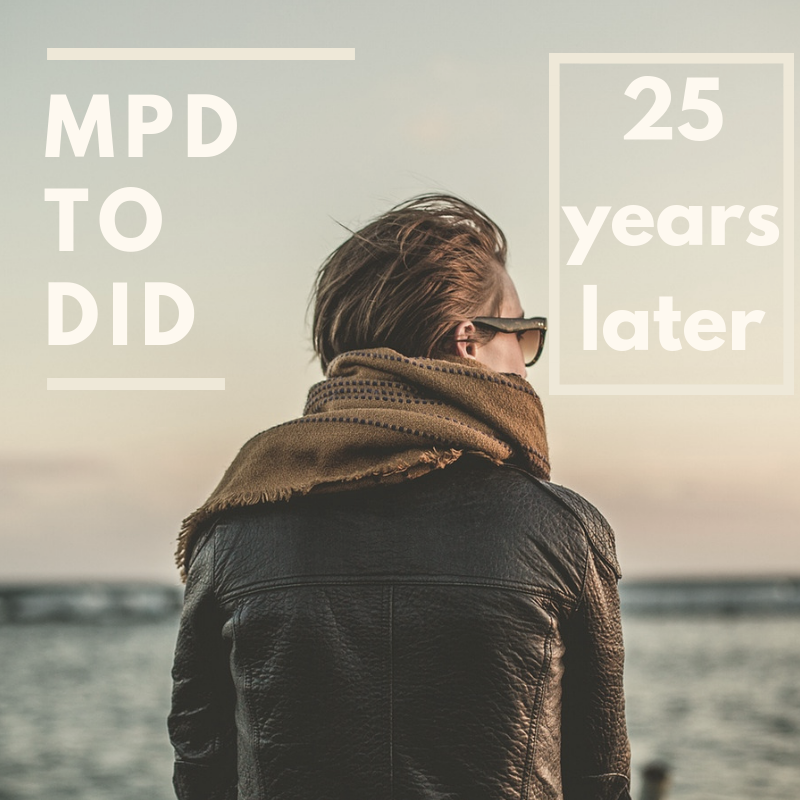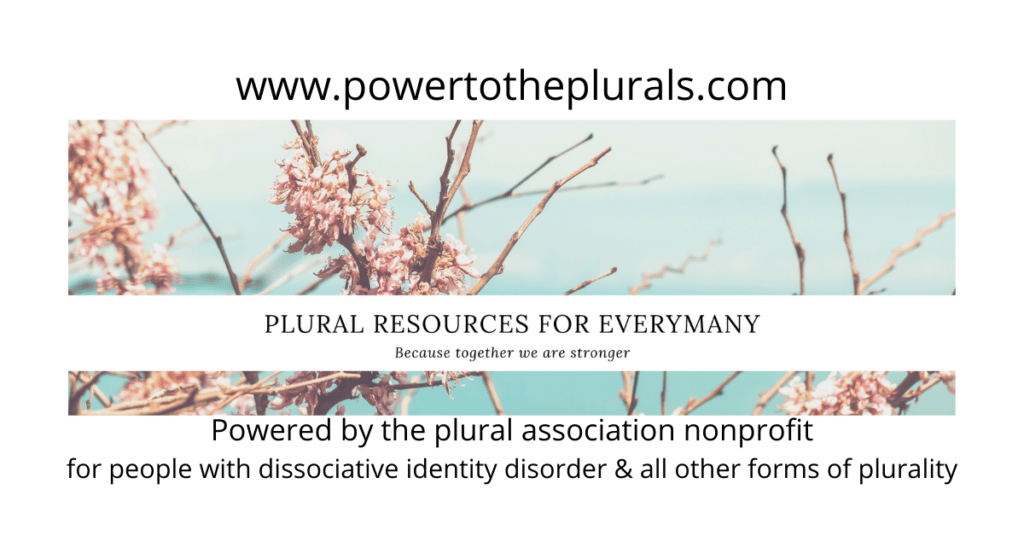|
TPA audio player
|
Want to first learn more about the difference between integration, (final) fusion, unification, blending and merging? Click here.
This article is about integration and final fusion. 25 years have passed since multiple personality disorder was reclassified as dissociative identity disorder in 1994. But not much seems to have changed when it comes down to actual help for those who suffer from the disorder. Hence this year, we will post multiple articles here, to address some of the past and current problems. This week the topic of final fusion and integration in adults and children. There are still no clear treatment guidelines for adults, the ISSTD still does not provide a clear answer on the topic of ‘final fusion’ and refuses to respond to questions on the topic after their 2011 revision. And yet the DSM5 (which was updated in 2012) still believes its the most favorable outcome.
Table of Contents
Integration & final fusion:
But that outcome often is only reached by a few and it is feared by many, who live with this condition. It fails for many patients in the long run, especially if the integration was pushed and no other coping skills have been trained sufficiently. Sadly, it is blatantly obvious how many therapists do not realize that at least a part of the person they are treating, is not interested in ‘integration’ and could get upset. Many therapists fail to explain what they mean by integration or just cant come up with a good definition at all. Therapists proudly explaining how they integrated their DID patient in a few session but never saw them again after that, sorry to break your bubble but they are not integrated. They are complaining about your lack of understanding to the next therapist or in one of the online support groups.
text continues under picture

Why do we see this happening over and over again? Well i think it’s because people have been looking for the correct help for the past 25 years and have not found it. Not even something that comes close to it. Besides the lucky few of course. We all see the minimum effort that has been put in prevention of abuse, trauma and hence DID. And even less effort (and money) has been put into those whom survived. And so we know that the problem continues. And hence we know we need scientific based treatment guidelines, more research and less stigma before the next generation of plural folks rises up. But what we really need is for the professionals to start working together. Stop the debate on its reality and look at the reality, the science. How is it acceptable to you all, that 25 years later, 1-3% of the world population is living with dissociative identity disorder, but the therapists who can treat it and know what they are doing is so very limited? It seems that those on the DSM IV Task Force did not have our best interest at heart. And the ISSTD seems to follow the same path. So here we are. Those living with DID, speaking up for ourselves. And for the next generation. The question obviously is, if you will listen and then act upon it accordingly.
I see another disturbing trend at the moment. Children being diagnosed with DID and given the option to integrate or not. A child naturally integrates during childhood. That get’s interrupted by trauma. There is no reason a child, taken out of a traumatic situation, shouldn’t aim for integration. DID in adults has a 70% chance for repeated suicide attempts if we believe the DSM5. There is no choosing to stay plural or not if you are a child. I think many good meaning parents, read too much about adults with DID and try to implement that in their children BECAUSE they cannot find the correct help.
The treatment guidelines for children by the ISSTD is clear that integration in children should be encouraged. And i personally fully agree with this! (again in the case of children)
How did we reach the point, where children seem to get the option to integration, while treatment guidelines clearly say children should be encouraged. Yet adults are way to often pushed into integration and the guidelines are unclear. The ISSTD guidelines just say that Kluft argues that final fusion is the best outcome. (page 133 and up) Kluft made this claim in 1993. That is when DID was still called MPD. That was DSM3. We are in DSM5 by now. It is very much outdated. But it does not say if ISSTD agrees with Kluft or if they just want the world to know the opinion of Kluft from 1993. Or what the actual deal is. It’s vague on purpose, just as the DSM5 is vague on purpose. It means less chance to get it wrong yourself.
We have a right to be represented by people who have our best interest at heart when it comes to these guidelines, diagnostic manuals and more. And we certainly deserve respect, compassion and understanding when you talk about us in your (DSM) back rooms and (ISSTD) conferences.
The Plural Association NonProfit depends on community support. Please consider donating towards the empowerment of plurals, so we can continue our important work. Donations can be made here: thepluralassociation.org/donate
About the authors
The Stronghold System are the proud volunteer founders & CEO of The Plural Association Nonprofit. They are from the Netherlands and reside in a 30-something-year-old body, are nonbinary, parents of an amazing child & 3 cats. They got diagnosed with Dissociative Identity Disorder over 10 years ago & also self ID as Plural.


I think one of the reason for the limited treatment options is still the controversy around if DID is real or not. I have met more than one psychiatrist and therapist that actually do not believe it is a proper diagnosis but often suggested or just an extreme case of dissociation (well, which it is, but they deny the idea of actual different parts being able to exist). The number of professionals who do not believe in the existence of DID is huge! I know everyone is always talking about the UK and the US and it might be different there. But in many East European countries, DID is not even recognized. In Sweden the number of people officially diagnoses with DID is just in its dozens. If your reality is not the reality being discussed by professionals, then getting help is almost impossible.
As for the question of integration therapy. I have worked with many people with DID (in a volunteer capacity) and most of them were talked into integration therapy first, and after years of therapy with no progress, most focus on internal communication instead. I think the idea of integration just seems so final and clean for those making the decisions about therapy options, they go for it. The thing is, most people who have DID are not even self-aware enough in all parts to make integration possible. A lot of them would benefit way more from learning how to work on internal communication. The goal should be an improvement of quality of life, the ability of functioning on most levels. Decades of lost time due to failed therapy, is stalling life. I also like the idea of giving the patients the option to choose what kind of support they think would work for them. As a group, those struggling with DID really need better patient representation, and speak up for themelves. But when your own reality is still often denied by professionals, it can feel like an unbalanced system of power.
Thank you so much for your comment.
bookmarked!!, I really like your site!
Thank you!
I blog quite often and I really appreciate your information. This article has really peaked my interest. I will bookmark your blog and keep checking for new details about once per week. I subscribed to your Feed too.
Real fantastic information can be found on blog.
I believe this website has very wonderful written written content blog posts.
Hello there, I found your site via Google while searching for a related topic, your website came up, it looks great. I’ve bookmarked it in my google bookmarks.